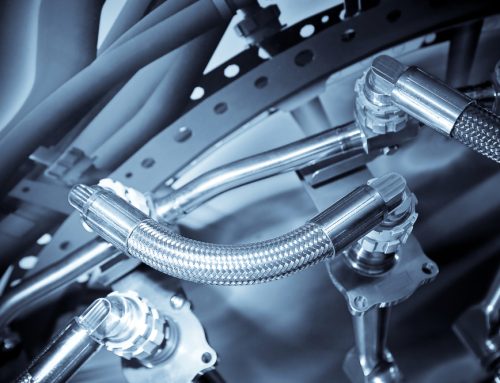LDPE and HDPE: Main Differences and Usage Areas
Introduction
The plastics industry plays an important role in today’s world and polyethylene is one of the most widely used types of plastic in this field. Polyethylene is available in two main forms: low density polyethylene (LDPE) and high density polyethylene (HDPE). In this article, we will examine the main properties, differences and uses of LDPE and HDPE.
What is LDPE?
LDPE stands for low density polyethylene. Developed in the 1930s, this material has a branched molecular structure, which gives it flexibility and lightness. The density of LDPE is approximately 0.91 g/cm³. This low density makes the material soft and flexible. It is often used in products such as plastic bags, packaging films, toys and food packaging. LDPE is preferred in many industries thanks to its chemical resistance and ability to remain flexible even at low temperatures.
What is HDPE?
HDPE stands for high density polyethylene. HDPE, whose molecular structure is more regular, has a density of approximately 0.95 g/cm³. This feature gives HDPE higher rigidity and durability. HDPE is often used in products such as water bottles, milk cartons, pipes and industrial packaging. It is also widely preferred in the construction and automotive sectors with its high temperature resistance and strong structure.
Main Differences Between LDPE and HDPE
Molecular Structure
LDPE has a branched structure, while HDPE has a more uniform structure. This difference affects the physical properties of the two materials. The branched structure of LDPE increases its flexibility, while the smooth structure of HDPE increases its durability.
Physical Properties
Density: LDPE has a density of around 0.91 g/cm³, while HDPE has a density of 0.95 g/cm³. This makes HDPE more rigid and durable.
Flexibility: LDPE has a flexible structure, while HDPE has a more rigid structure. For this reason, LDPE is preferred for the transport of light loads, while HDPE is ideal for heavier loads.
Chemical Resistance
HDPE is more resistant to chemicals than LDPE. For this reason, HDPE is generally used in chemical packaging and pipes, while LDPE is mostly preferred in food packaging and light products.
Temperature Resistance
HDPE is more resistant to high temperatures and can be processed over a wider temperature range. While LDPE remains more flexible at low temperatures, it may deform at high temperatures.
Areas of Use
LDPE Usage Areas
LDPE is used in various applications thanks to its flexibility:
Packaging Films: It is frequently preferred in the packaging of food and other products.
Plastic Bags: Thanks to its lightweight structure, it is widely used in shopping bags.
Play Materials: It is used in toy making due to its flexible structure.
HDPE Usage Areas
HDPE’s durability makes it popular in the following areas:
Water and Milk Bottles: Used for liquid packaging due to its robust structure.
Pipes: Used in construction and irrigation systems.
Chemical Packaging: It is preferred thanks to its resistance to chemicals.
Result
LDPE and HDPE are two important members of the polyethylene family. Both have different properties and uses and play an important role in different industries. While LDPE is ideal for food packaging and pouches due to its flexible and lightweight structure, HDPE’s durability and temperature resistance make it suitable for water bottles, pipes and chemical packaging. The right choice of material should be determined by the needs of the application.
This information will help you learn more about LDPE and HDPE. Understanding the importance of these two materials in the plastics industry allows you to make more informed decisions in product design and selection.





